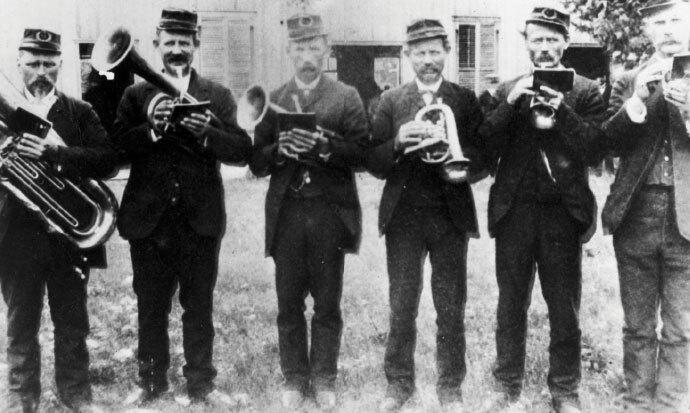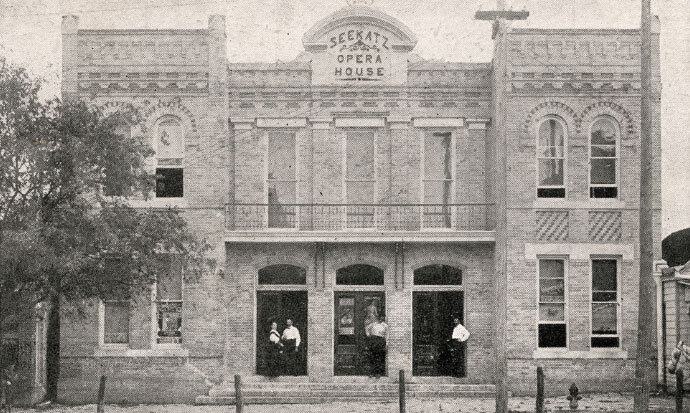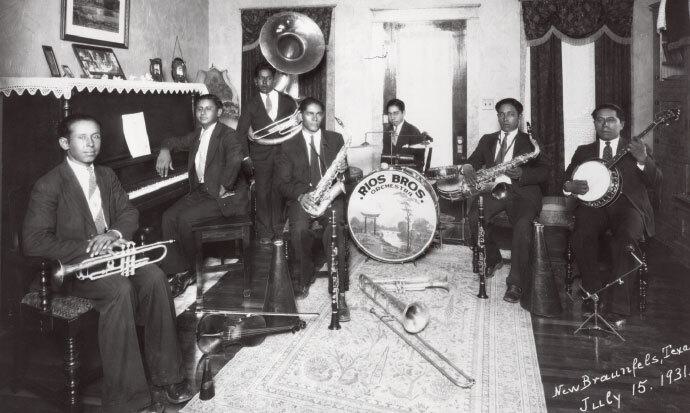The Germans brought their love of music with them to the New World. Singing societies were a favorite leisure activity, with as many as ten formed in New Braunfels’ early years. These German singing societies became the primary promoters of serious music in Texas prior to World War I.
The state’s first Saengerfest (singers festival) began in 1853. One of New Braunfels’ most popular singing societies, the Germania Gesangverein, invited similar organizations from Austin, San Antonio, and Sisterdale to a two-day singing festival held in New Braunfels on October 15-16.

The strong musical culture of emigrating Germans boasts a long-lasting impact throughout Texas. Numerous dance halls were opened in nearly every village, and became a center of social gatherings. Some of these community centers remained throughout the 20th and 21st centuries as popular music venues for a wide range of genres, from country to blues to Tejano to rock. Gruene Hall and Anhalt Hall are prime examples in the New Braunfels area that are active and successful today.


Sophisticated German-language theater and opera flourished in Central Texas after 1850, presented mostly by social clubs in German towns such as New Braunfels.
Visual artists flourished as well. Carl Iwonski, one of the town’s original founders, provides historians with knowledge and visions of the new land and its early residents. His paintings and drawings of the city, along with portraits of community leaders, are among the few images available before the advent photography.


Music was a part of many activities. Bands ranged from a single fiddler playing for dances in the 1840s to full concert ensembles by the 1880s. German bands typically played high-quality instruments, and were often connected with the conductor’s teaching activities. The German band tradition continues to thrive today, as evidenced by the flurry of area events each year.
Popular German folk music and dances, including the polka and schottische, as well as the use of the accordion and other German instruments, had a widespread influence on Texas music. Later generations incorporated the German influence into their own musical styles, creating new music genres, including the Tex-Mex conjunto.

Hermann Seele helped found the New Braunfelser Theater-Gesellschaft just six short months after the founding of New Braunfels. The proceeds from the theatre company’s first six performances were donated to the school board’s building fund. Thus, the first public school in the state of Texas was funded in part by the theatrical arts.


Fritz Goldbeck, another original settler, arrived to New Braunfels when he was 14 years old. Goldbeck became the first German-Texan poet, writing a great number of poems, using simple and unpretentious language to describe the settlers’ lives. He was later a two-term mayor of New Braunfels. Additional poets were Ludwig Vogel, Rev. Gustave Eisenlohr, Hermann Seele, Rev. Louis Ervendberg, and Rev. August Schuchard.